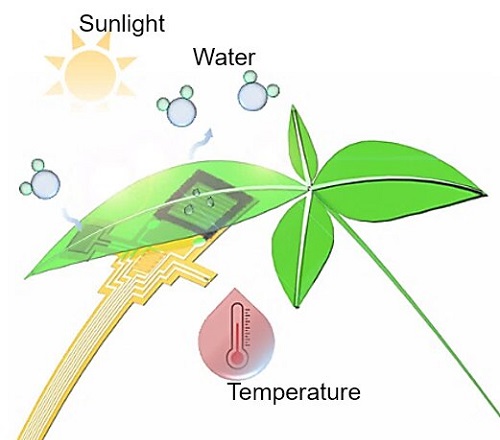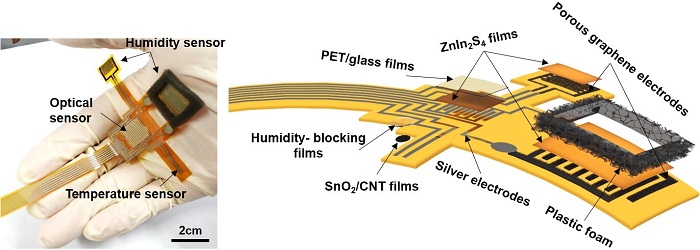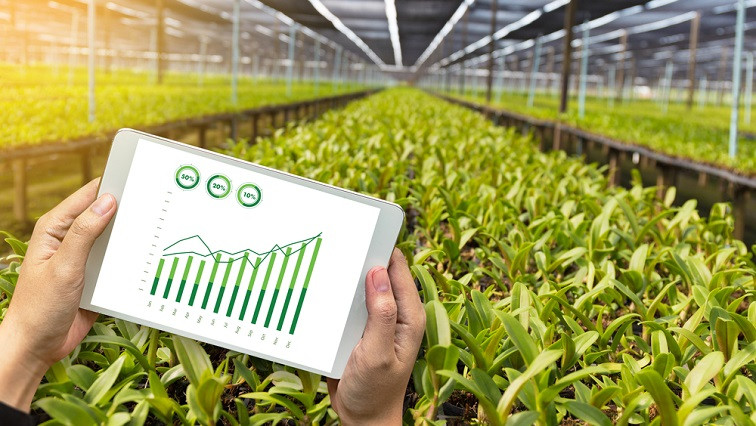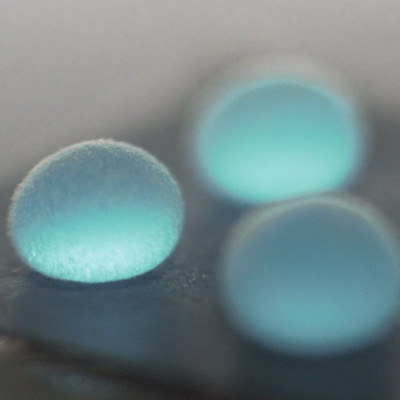The emergence of biotic and abiotic stresses poses potential impairment on plant growth and yield. Accurate monitoring and assessment of plant health status is therefore highly important; however, conventional bulky and heavy sensors are usually restricted to centralized climate conditions or perform measurements in gas exchange chambers.
One strategy relies on intelligently interfacing plants with flexible sensors. However, it is challenging to tap into physiological information in plants due to their relatively complex signaling pathways. Additionally, synchronous detection of abiotic stress factors demands a perdurable, flexible, multifunctional sensor system for prolonged monitoring without performance degradation and signal cross-talk.

Integrated flexible device attached onto the lower epidermis of the leaf to monitor transpiration processes.
In a recent study published in ACS Nano titled "Multimodal Plant Healthcare Flexible Sensor System," researchers from Osaka Prefecture University (OPU) report an integrated multimodal flexible sensor system comprising a room humidity sensor, a leaf humidity sensor, an optical sensor and a temperature sensor that can tap into potential physiological health issues on plants. Significantly, dehydration conditions are visually recorded in a Pachira macrocarpa over a long-term monitoring (>15 days) based on such plant-machine biointerfaces by leveraging the plant transpiration process.
Using stacked ZnIn2S4 (ZIS) nanosheets as the kernel sensing media, the ZIS nanosheets-based flexible sensor can not only perceive light illumination at a fast response (~4 ms), but also monitor the humidity with a perdurable steady performance. As the ZIS nanosheets are applied in humidity sensor for the first time, theoretical and experimental investigations of humidity sensing mechanism were carried out in detail. Three primary abiotic stresses (i.e. humidity, light and temperature) that govern the transpiration of plants are measured without signal cross-coupling effect in real time.
 Photo of the multimodal flexible plant healthcare device (left) and schematic of the detailed device structures with different functional components (right).
Photo of the multimodal flexible plant healthcare device (left) and schematic of the detailed device structures with different functional components (right).
"Most of the flexible sensors have been applied to human health monitoring and/or human-machine interfaces. The proposed concept of the multimodal flexible sensor system for the plant health status monitoring may open up a pathway toward intelligent agriculture," said Prof. Dae-Hyeong Kim, an expert on soft electronics.
Prof. Kuniharu Takei, the leader of this project, said, "By rationally selecting the active sensing materials and electrodes, we have addressed the perdurable sensor performance for long-term tracking of abiotic stresses on plants as well as multichannel signals' collection without crosstalk."
Future tasks include further reducing the thickness and weight of flexible sensor systems, increasing sensor functionalities in response to other biotic and abiotic stresses, and improving capabilities to decode plant chemical signals in spatiotemporal patterns. The influence of environmental gas, such as CO2, O2, or NOx, on the sensor output should be considered as well.
Read the original article on Phys Org.







